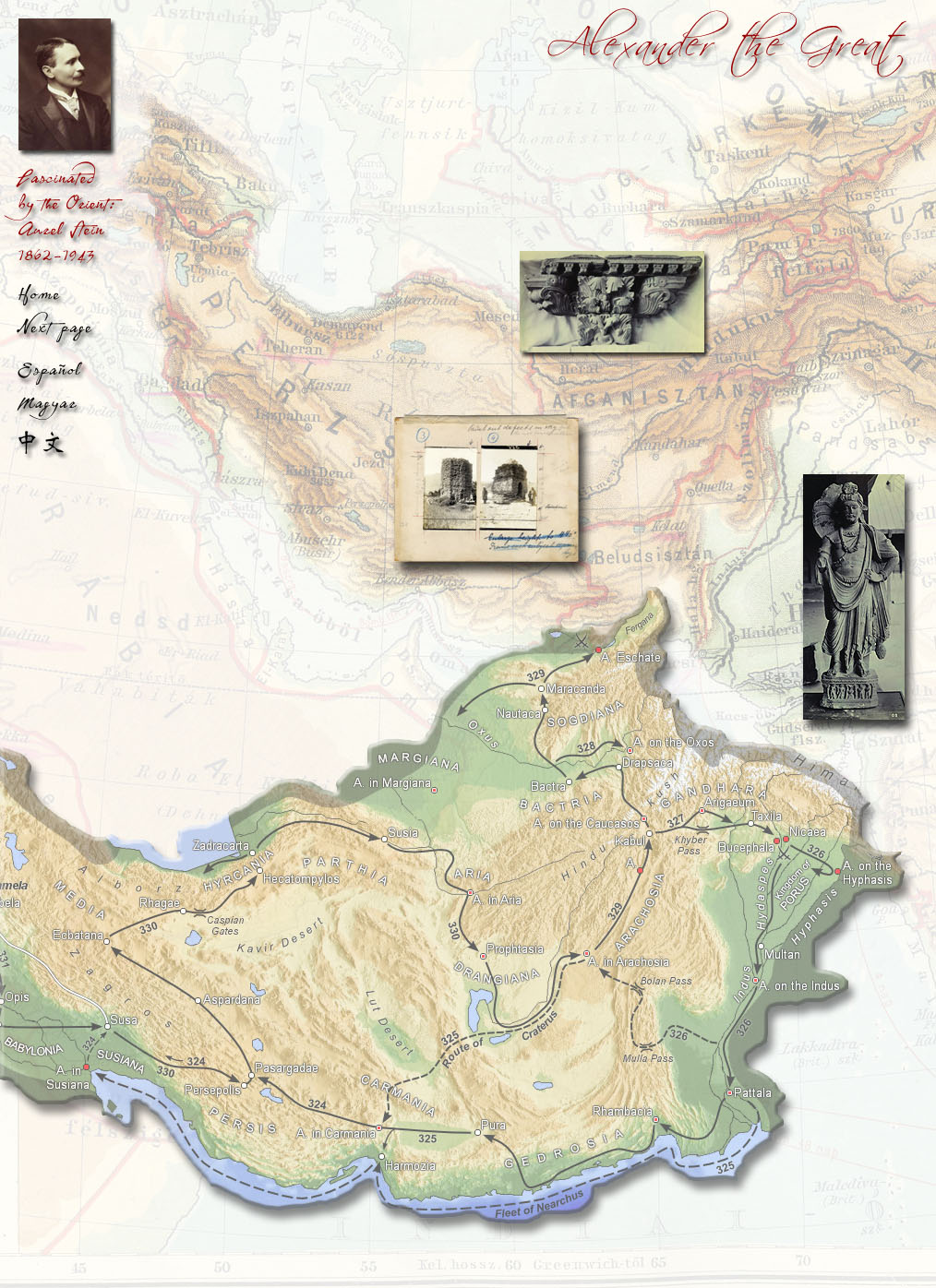![]() • his route through the Punjab
across the
• his route through the Punjab
across the
Salt Range to the Jhelum river, and
the exact
site
of the decisive battle in which
he defeated Poros
• the line taken during the near-disastrous retreat from
the
Indus Delta to Persia through
Gedrosia.
The results of his archaeological and geographical expeditions were published in his book On Alexander’s Track to the Indus (1929) and in various articles.
The meeting point of East and West and the mixture
and synthesis
of the various cultures flourishing in those places were
always the focus
![]() of Stein’s scholarly interest. Greek culture
transported far into the
of Stein’s scholarly interest. Greek culture
transported far into the
heart of Asia was manifested in the Buddhist
![]() art of Gandhara
in Afghanistan
art of Gandhara
in Afghanistan
and Northern India.

 In
the 1870s at the Kreuzschule of Dresden, one of Stein’s teachers gave
him a copy of The Campaigns of Alexander by Arrian, the 2nd
century Greek historian. As a child Stein became fascinated by the great
In
the 1870s at the Kreuzschule of Dresden, one of Stein’s teachers gave
him a copy of The Campaigns of Alexander by Arrian, the 2nd
century Greek historian. As a child Stein became fascinated by the great